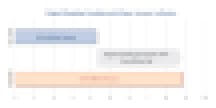Library closures hit patrons hard—especially those who relied on them as their main internet source and used them to access online educational resources. Teachers cite the challenges of remote instruction as a top reason for leaving their jobs during the pandemic. And kids double down on digital reading—all in this Edtech Reports Recap.
Libraries Close, Internet Access Ends
There have been several studies about how the lack of fast home broadband has hurt kids’ access to online learning during school closures. Now, a set of surveys from the think tank New America finds adults’ education is suffering, too, as public libraries closed during the pandemic.
The surveys and accompanying report, “Public Libraries and the Pandemic: Digital Shifts and Disparities to Overcome,” find 15 percent of U.S. adults lost their main source of internet access as libraries started to shut down in March 2020. While people use libraries—and their internet access—for a variety of reasons, the report says for those who rely on the library as their main internet source, 31 percent used it for “academic research or a school assignment.” Educational use was 22 percent for those who didn’t lose their main source of internet access when libraries shut down.

Young adults were most likely to say they lost their main internet access when libraries closed: ages 18-29 (24 percent), followed by ages 30-44 (22 percent), 45-60 (12 percent), and over age 60 (5 percent). Those affected were also much more likely to be adults who were male, lived in an urban area, spoke a language other than English in their home, and were persons of color. “This finding,” the report notes, “is one of very few in the survey to show a meaningful difference between respondents living in urban and non-urban areas.”
Library nerds (guilty) and supporters will find a lot more to explore about libraries, awareness of online resources and patron usage patterns during the pandemic.The rich report is based on a nationally representative survey of 2,620 adults conducted from late September through mid October, plus a smaller December survey of 118 educators and professionals who work for community-based organizations. The full surveys are posted along with the report.
Generally, the report finds a “meaningful shift” toward the use of online resources in libraries. But challenges include outreach and services to people of color and low-income households, and to those who don’t have adequate home internet access.
Among its recommendations, New America calls on policymakers to “expand the E-Rate Program so that libraries and schools can get discounts on the technology services that patrons and students need to get online from home.”
Zoom-ing Out the Door
The teacher shortage has been well documented. And it looks the stress of remote teaching is a contributing factor to public school teachers leaving their jobs voluntarily before retirement.
A new RAND Corporation research report, “Stress Topped the Reasons Why Public School Teachers Quit, Even Before COVID-19,” singles out “challenges of remote instruction” as one of the top five COVID-19-related reasons for leaving. RAND surveyed 958 former public school teachers in December 2020.
Some 45 percent of what the report calls “teacher leavers” stopped teaching in public school in March 2020 or after. Of those who left for a reason related to the pandemic, 49 percent cited “challenges of remote instruction,” 43 percent mentioned the “challenges of hybrid instruction” and 30 percent attributed it to “inadequate remote instruction materials.”
Teachers could select multiple reasons for leaving early, but when asked to identify the “biggest” one, “challenges of remote instruction” bubbled up into the top five (8 percent), behind insufficient pay to merit the risks or stress (21 percent), a loved one with a high-risk condition for COVID-19 (17 percent), a health condition that put the teacher at greater risk for COVID-19 illness (16 percent) and childcare responsibilities (13 percent).

Teachers over age 40 were three times more likely to cite challenges of remote instruction as their main reason for leaving (12 percent) than teachers under 40 (4 percent). “Teachers who left mainly because of the pandemic were also more likely to report experiencing technology issues during multiple days each week,” the report observes.
When I Say ‘Virtual’ Education, I Mean ‘Reality’
So what do we desire in education technology after the pandemic fades? If you’re in the United Kingdom, United States or Australia, virtual reality tops the list.
As part of its wide-ranging “The Future of Learning Report”—which covers everything from access and inclusion to personal and professional development—online learning platform company FutureLearn dug into digital trends. FutureLearn, through market research firm YouGov, surveyed nationally representative samples of adults aged 18 and older in the U.K. (2,200), U.S. (1,182) and Australia (1,040) in December 2020.

When asked which of five technical innovations they’d like to see in education by 2030, respondents in all three countries had virtual reality as their top selection. VR was more popular in Australia (42 percent) than in the U.S. (37 percent) or the U.K. (33 percent).
Runners up to VR, in descending order, were augmented reality, education features on social media, personalized chatbots, and drone delivery of course materials. No, you read that last one right.
Paper or Pixel?
Every year, Renaissance Learning publishes what it calls the world’s largest annual study of K-12 reading habits, the “What Kids are Reading” report. But this year—tucked into its colorful separate lists of popular print and digital books by grade level based on reading data from more than seven million students nationwide—includes some fascinating pandemic reading stats.
Students with access to Renaissance’s myON digital reading platform during the pandemic more than doubled their time spent reading from fall 2019 to fall 2020. The 107 percent increase, from 4.3 million to 8.9 million hours, was accompanied by what the report called “lighter” print reading.
When contacted, Renaissance defined what “lighter” meant: a 6 percent decline from the previous year in terms of the number of books read. One reason for the drop could be that it simply was harder to get physical books into the hands of students in a pandemic.

Admittedly, these stats are limited to students who used myON and Accelerated Reader, Renaissance’s reading goal-setting and book quiz product. But the sheer numbers of students is large and the report says it’s roughly representative of U.S. schools.
And yes, parents—even grandparents—will recognize some of the top books on the grade-level lists from when they were a kid. “Charlotte’s Web,” anyone?


